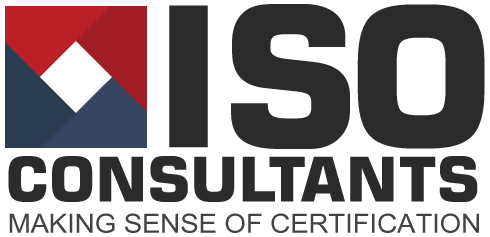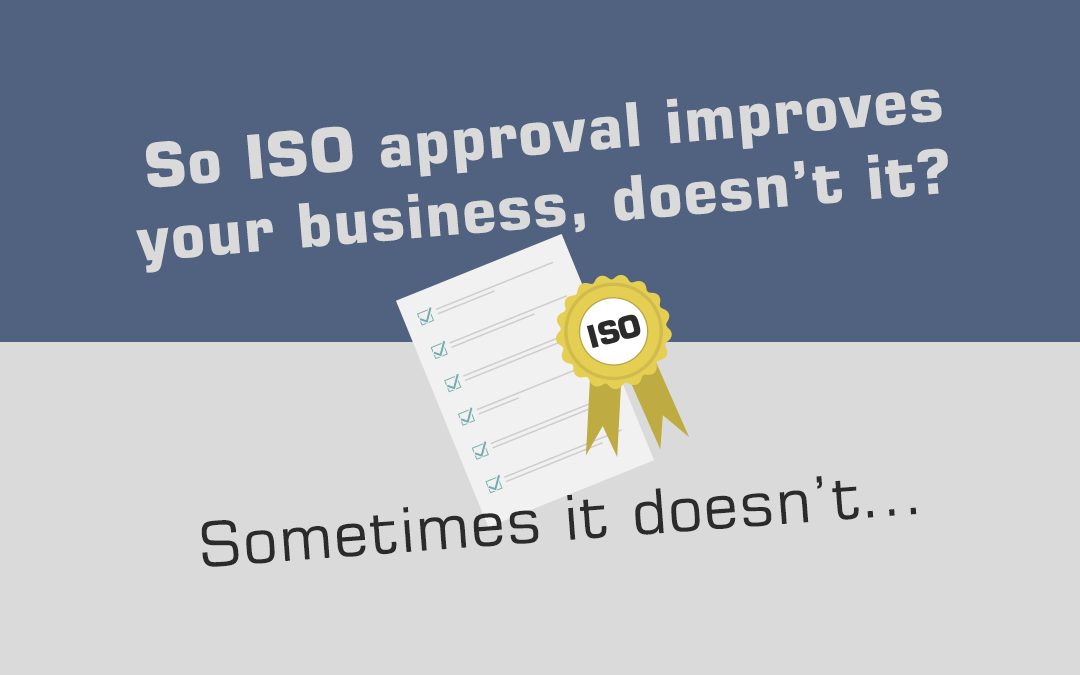A customer contacted me recently who needed a new ISO approval. The “driver” was to get the company through a tender process and into a new market.
I specialise in getting businesses ISO-approved quickly with concise management systems. They contain minimum documentation and focus on improving the company’s performance. They are designed to be maintained the system with as little an additional admin burden as possible.
A moment’s boasting: I don’t think there are many consultancies who can implement an effective system and get it approved much faster than I can. This is because, through experience, and by conviction, I have to write systems that are based on business reality. Creating thousands of words, and “playing for time”, in order to inflate fees, really isn’t my style.
Designing Something That Fits

Back to my customer. I cut time to a minimum, focusing on basics and practicality. The quote was for a set number of days to write, implement and gain approval for the system. I was doing my best on his behalf. No over-runs, but no skimping either.
The potential customer came back to me. He said “Very interested in your services. But I have a system already. Any chance you could update it instead of writing a new one? That would be quicker and cheaper!”
Facing Something That Really Doesn’t Fit.
The documentation was mailed over to me. The fun began…
The documents were mostly dated 2014. They had been generated in a completely different business with a significantly larger workforce and entirely different product. Same company, very different business activity. Hence relevant ISO approval now needed.
Worse, they referred to out of date versions of the requested ISO standards.
Wrong business, wrong standards. Apart from that, fine. It would be quicker to start with a clean sheet. The customer was unconvinced. Time to move on.
Around the same time time another customer asked me for an opinion. He had downloaded a management system he’d purchased on line but was struggling. I had a look.

It Gets Worse.
Now, I’ve been involved with management systems most of my business life. I’ve worked with actual certification (as an auditor) since 1993. The documentation was the worst set of nonsense I’ve ever seen. I’ve read some rubbish in my time, but this was on a different level. Worse, it was also expensive rubbish.
What was wrong? Somebody had cobbled together different bits of a standard. Then copied in some forms they’d found somewhere. Finally, they had thrown in some more meaningless “wordage”. The result? About 25 documents, some very lengthy, but all very useless. Explaining to my contact that he had been deceived was difficult and embarrassing.
Reality Is Your Friend, Believe Me.
The objective of these stories? The essence of ISO approval is as follows, and it’s not difficult to grasp:
You are looking for a system describing how your business operates in reality. Whether this is for Quality, Environment, Health and Safety, Information Security purposes, is irrelevant. It should describe how YOUR business functions. Why? In order to be able to make sure YOUR business improves. It makes sure that your actual activities don’t kill anybody, pollute the world or share your customers bank details with cyber-scammers.
What’s Under The Bonnet?
Think of it like this: You have a Ford Car, you find it hasn’t got an engine. You have two real choices. You can go to a Ford dealer and buy the correct engine and have it fitted. Alternatively, you can go to your local scrap yard. Once there, you can say “I want an engine”, take whatever is offered, and throw it at the car. There will be an engine under the bonnet, it will look convincing to a casual inspection, but it won’t power the car. That’s exactly what you are doing if you take a set of documents from a different business, with different management and different aims.

ISO Approval Designed For Your Business. (It Only Works If It Fits)
So I’m sorry if you think ISO-based management systems, written by world leading industry experts, don’t work. Before rejecting them, I would suggest the following:- invest some time in making sure the system matches YOUR business. That it is lined up and designed to deliver YOUR business aims and objectives. Specifically that it is written around YOUR workforce and facilities.

I’m a passionate advocate of ISO approval that works in the real world. If you want to know how to do this give me a ring or drop me an email.


